Best practices for nonprofit audits extend beyond just maintaining accurate financial records. Nonprofits must embrace collaboration, as it plays a pivotal role in preparing for audits. By involving every level of the organization, from board members to volunteers, a nonprofit can establish robust internal controls that ensure ongoing regulatory compliance and financial integrity. Regular monitoring and evaluation are also critical, as they provide a framework for continuous improvement and accountability. This approach not only strengthens the organization’s financial health but also enhances its ability to demonstrate impact and success, which is vital for securing future funding.
Financial Audits
- Auditors must carefully assess these arrangements to ensure compliance and proper reporting.
- The audit committee oversees the organization’s financial reporting process, internal controls, and interactions with the external auditors.
- For example, if your nonprofit is based in California and you have a gross income of $2 million or more, you will be required to get annual audits.
- Auditors need to review the nature and extent of political activities to ensure compliance and to advise on maintaining the appropriate balance between charitable and political work.
- Each type of audit serves a different purpose but primarily aims to verify the financial position of the charity.
They ensure the accuracy, completeness, and compliance of the financial information with accounting standards and regulations. Donors, grantors and other stakeholders view audits for evaluating an organization’s financial health. Nonprofits must provide a minimum of five years’ worth of documentation for the auditor to review. The audit examines the organization’s financial statements, including income and expenses (such as salaries). A non-profit audit thoroughly examines your organization’s financial records https://nyweekly.com/business/accounting-services-for-nonprofits-benefits-and-how-to-choose-the-right-provider/ and operations conducted by an independent auditor or audit firm. The primary purpose of a non-profit audit is to assess the accuracy, completeness, and compliance of the organization’s financial statements and transactions and its adherence to relevant laws and regulations.
- Many NPOs now use specialized software to manage their financial records and track donor funds.
- These reports reflect the nonprofit’s financial health, including net assets categorized by donor restrictions, providing critical information to auditors and stakeholders alike.
- The annual report often includes a narrative section that discusses the charity’s mission, objectives, and impact, providing a fuller picture of the charity’s activities.
- These articles and related content is not a substitute for the guidance of a lawyer (and especially for questions related to GDPR), tax, or compliance professional.
- These requirements, governed by accounting standards and regulations, ensure financial information is presented accurately.
The Auditors’ Report
This includes having a clear governance structure, defined roles and responsibilities for board members, and effective oversight mechanisms. Proper governance is crucial for preventing conflicts of interest, ensuring ethical conduct, and maintaining the organization’s integrity. Auditors should review governance policies and practices, providing recommendations for improvements where necessary. Auditors should encourage organizations to adopt comprehensive risk management frameworks that identify, assess, and mitigate risks across all areas of operations. This includes regular risk assessments, developing risk mitigation plans, and monitoring the effectiveness of these plans. Each grant or donation may come with unique and often complicated conditions, making it necessary for auditors to review a wide range of documentation and ensure compliance with various guidelines.
Should you try to find a pro bono auditor?
Regular audits provide non-profits with essential insights that enhance both financial transparency and operational efficiency. By establishing a consistent audit frequency, organizations can ensure that financial records reflect accurate and reliable data. This practice not only helps in identifying discrepancies but also fosters accountability among staff and stakeholders. At NPact, we understand the importance of financial transparency, compliance, and accountability for non-profits and community foundations.
- Organizations that prioritize audits can strengthen operations and improve donor confidence.
- Tom is a multi-disciplined leader with over a decade of experience in nonprofit operations, technology leadership in government, and over two decades of servant leadership.
- The cost of a nonprofit audit varies depending on the size and complexity of your organization.
- Auditors assess the adequacy and effectiveness of internal control systems, including processes for authorizing transactions, safeguarding assets, and ensuring accurate financial reporting.
- This article explains the specifics of conducting an independent audit for your non-profit organisation.
- Auditors must ensure that NPOs adhere to these reporting standards, which can be complex due to the varied nature of the funding sources and the restrictions placed on them.
- Audits contribute significantly to the sustainability of nonprofits, enabling them to make a greater impact on the communities they serve.
Nonprofit Technology Impact Report
Nonprofit boards should create committees to focus on needs like governance, fundraising, and finance.
Reporting and Disclosure Requirements
For clarity and consistency, we’ll primarily focus on independent, external financial audits. However, the other types are also useful tools for maintaining transparency and accountability. Every dollar counts for nonprofits, and an independent audit is the perfect opportunity to check that you’re being as efficient as possible. Plus, going through this process is great for demonstrating transparency among stakeholders. As you can see, an audit is a very detailed process which is much more involved than a financial statement review. It can be a stressful time for the organization, and its accounting services for nonprofit organizations staff, if not handled properly.
What is an Independent Audit?
For more nonprofit management insight and tips, be sure to check out Instrumentl’s blog. Once you review the RFPs from your varying choices, select an auditor that best meets your needs. Such organizations are involved in activities like education, the healthcare sector, scientific and professional service, entertainment, religious acts, and social assistance. At Jack Ross Audit, we pride ourselves on delivering exceptional service through certified accountants ready to guide you. Schedule your free consultation today to explore how we can assist you in achieving financial stability and compliance. Following a recommendation, I have used Jack Ross for all my accounting needs (including payroll) since the inception of my business over 12 years ago.
Audit verification refers to the process of gathering and evaluating evidence to support the assertions made by an entity in its financial statements. Verification is a crucial step in the audit process, as it helps auditors ensure the accuracy, completeness, and reliability of the financial information presented by the audited entity. The auditor expresses an opinion on whether the financial statements are presented fairly in all material respects, in accordance with the applicable financial reporting framework.
Deficiency in operations
The size of the organization and the complexity of its financial transactions are the primary factors that affect the cost and time of an audit engagement. Other factors include the number of locations, the number of employees, the number of funders, the number of volunteers, and the geographic dispersion of the organization’s operations. As a whole, the audit process takes approximately, 8-15 weeks depending on the size and complexity of the organization. Also, allow for pre-audit time to begin gathering the required documentation prior to the start of the audit which will help reduce the time needed to complete the audit.




